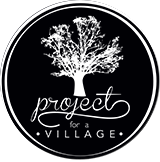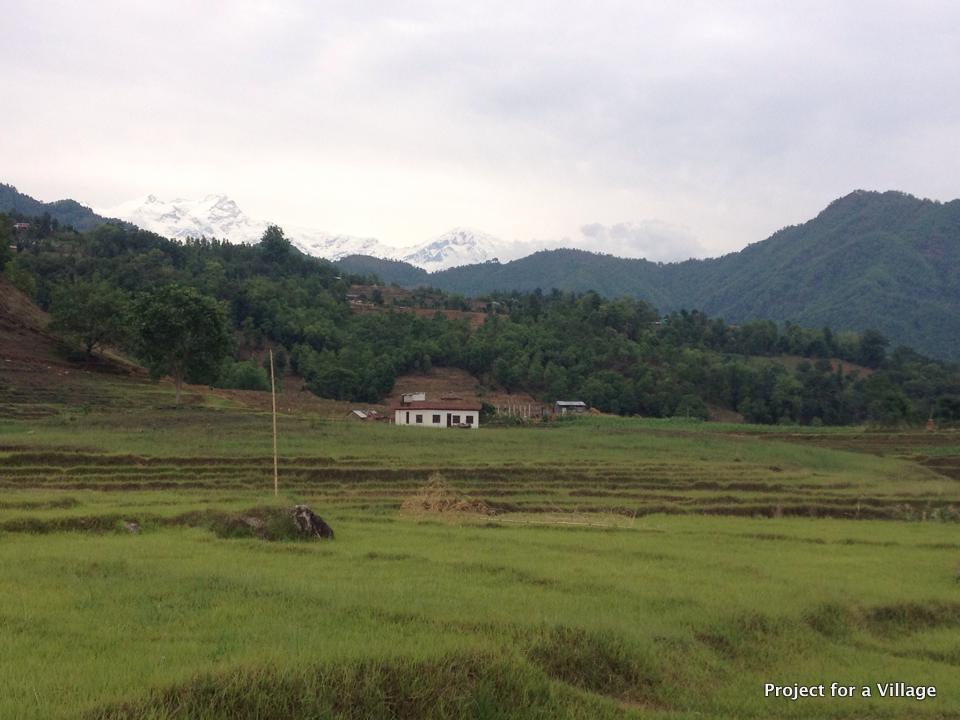Written by Katie Lillie Gurung – More stories of their time in Nepal.
We were getting ready to leave for Bijaya’s nephews Hair Cutting Ceremony, in the Gurung culture it is called Chhiyor. This has to take place at his sister’s house – who lives in a remote village almost a 4 hour walk from Bijaya’s village. We left from Sundar Bazar, and were originally going to go first to Dumre to try to catch the one bus that goes to her village. However, we were able to rent a jeep in Sundar Bazar to take us. Bijaya’s “aunt”- (a relative that currently lives at his aunt’s house in Sundar Bazar,) and Bijaya’s cousin came with us to the Chhiyor. The ride was easily the bumpiest ride I’ve even taken – which is saying a lot! Basically the whole road was unpaved and it took us nearly two and a half hours by jeep. We all agreed that it probably would have been easier just to walk there, haha. For a Nepali boy there are three important ceremonies in his life. The first is his Rice Eating Ceremony, which happens at 6 months of age. The second important ceremony is his Hair Cutting Ceremony because without having this ceremony they cannot get married and the third is the Marriage Ceremony. For the hair cutting, the boy’s “Mama” (maternal uncle) must be there and do the actual hair cutting. Bijaya is his nephew’s only “Mama” so therefore we wanted to try to do this ceremony while we were in Nepal because we don’t know how soon we will be able to return. Bijaya’s nephew is now 9 years old and the ceremony can take place at many different ages. Bijaya’s hair cutting was when he was just 7 years old, but some do not take place until they are 16 or 18. Bijaya does not remember much of what took place at the ceremony, since he was so young, so we were not sure of what to expect. When we arrived at his sister’s house she was preparing a tray full of items which are necessary for just about any ceremony or festival in Nepal. Some of the items include flower pedals, tikka (raw rice used to put on the forehead as a blessing), roti (traditional Nepali bread), an oil candle, and water. We arrived a little late – around 9:30 and the ceremony was supposed to be done sometime between 8 and 10 (according to the religious leader they had previously consulted with.) Therefore, we started the ceremony soon after we arrived. Bijaya’s sister’s family recently moved into a house of their own (out of her in-laws house) but the ceremony must be done at their original house, so we walked down the road to her in-laws house. The ceremony all happened very fast. His nephew (who’s name is Rohit), went into the buffalo shed with Bijaya and Rohit’s grandfather. Yes, in the buffalo shed! They put a rope around his neck (not tight, don’t worry!) and put grass in his mouth – which he has to “eat” (hold in his mouth) throughout the ceremony. Rohit was not happy during this part because the grass had a very bitter taste! Then Bijaya takes scissors and cuts some of his hair around the edges. Traditionally a razor blade is used to cut all the hair off so that it is down to the skin almost. However, nowadays some people don’t cut it all off, and just a little bit to symbolize the hair cutting. After the hair cutting, Rohit was told to go rinse off and clean up quickly, and then he is giving new clothes from his Mama and Maiju (the maternal uncle’s wife-, in this case, me!) along with a traditional Nepali cap. Bijaya put the Dhaka Topi (Nepali cap) on his nephew and then gave him tikka (by putting rice on his forehead and giving him a blessing) and some money (which is often given out during the tikka blessing.) Then Rohit had to give tikka to two young girls, which meant that part of the ceremony was over. I’ve asked many different people about these traditions and the reasoning behind eating grass, acting like a buffalo for example, but no one knows. It’s just something that has been passed down from generation to generation, but it seems the meaning was lost somewhere along the way. We all walked back to their house where throughout the day people would come to give Rohit tikka, money, and sometimes a prayer scarf. They fed us roti, vegetables, meat for the meat-eaters, and rice. We stayed until around 2 or 3pm and a little unwillingly got back in the jeep for our ride home. Thankfully, for some reason, the ride home didn’t seem quite as bad. We originally were going to have the jeep take us from there to Bijaya’s mama’s village, however the driver said the road didn’t go through. We found out later it does, so were a little frustrated because we still have to find time to go there before we leave and time is going so fast!


